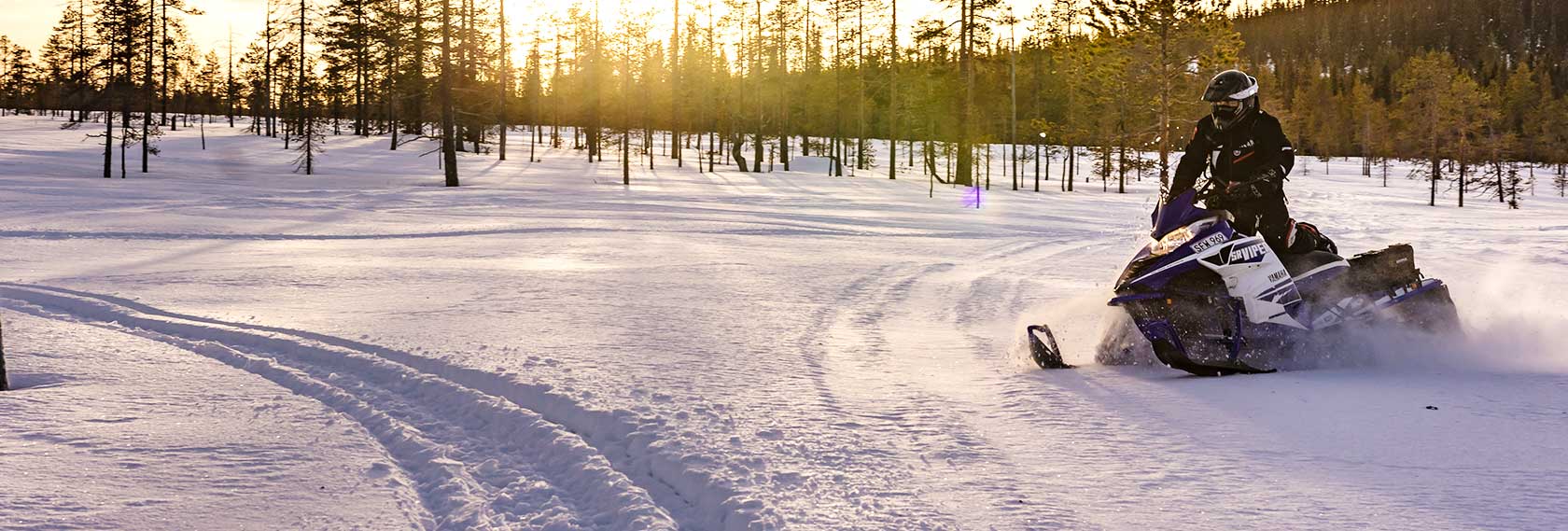

In the last issue we looked at future technology with regard to ABS brakes on sleds. This month we will follow that same thread and ask what other real world upgrades sled makers could give us? If you have been following the automotive world lately you know they are burning the midnight oil to give us the latest in driver convenience features. Lot’s of goodies have trickled down to drivers like me waiting anxiously for all they can offer. I like it.
One feature they have that we don’t have is HID lights. Just this year Yamaha started offering an HID lighting upgrade as an accessory in their Apex series of sleds and your humble reporter thanks them profusely for this. I have always been a proponent of safety and my hat is off to any company that can further that goal. Yamaha is making a bold move here by doing this. On one hand they have to warranty it, so it has to work, and work reliably. On the other hand it still has to be a better lighting system or they are just offering us another shade of grey. They haven’t quite pulled the trigger on putting it in the sleds, directly the factory, but from what I can gather they will after they test the waters and by monitoring customer demand. I suspect they will find this is the upgrade we have been looking for and Arctic Cat, Polaris and Ski-Doo will soon follow suit.
So, why all the fuss about lights? Why can’t we just be happy with good old Halogen technology? Simply stated, HID lights flat-out blow away any existing halogen bulbs in lighting intensity, reliability and color definition. Believe it! I installed HID’s on my 2010 Z1 and on my pickup truck. Both on the pavement and on the trail, I witnessed beyond doubt that these are the lights of the future.
OK, so what does HID stand for and how is it better? HID stands for High Intensity Discharge and the system consist of the bulb, ballasts, a harness and igniter. That’s it. The requirements for the system are 12 volts DC and they only use 35 watts of power. Most headlight low beams are 55 watts, the highs are usually in the range of 60-65 watts, so, this system actually uses less power than Halogen! The bulbs are made with a xenon gas and have no filaments. An electrical charge excites the xenon gas and light is produced from this reaction. The resulting light is a very stable and bright light. The spectrum of light is rated by color temperature. This is not to be confused with lumen output or brightness. For instance 4,000 K, or Kelvin, is a fairly neutral white light with just a hint of warm overtones, while 6,000 K is a cool, crystal-blue white light. The temps go all the way up to around 12,000 K, which is a purple-blue. Most applications use around 6,000 K, and is the brightest white one can get.
Installation on my four-stroke was plug and play as the unit came with a factory style harness that the stock Arctic Cat connector would plug right into. A ground wire was hooked up and the hot was wired directly to the battery. I used the low beam light, which was an 881. It took some time to detail up the wire harness and fuses to look pro but anyone looking at it would think it came right from the factory. Two-stokes without a battery could be done but you will need 12 volts DC to pull this off.
Testing on trail last year showed that oncoming riders respect the brightness but are not overwhelmed by it. As long as the lights are adjusted properly they are okay. From the rider’s perspective, reflective signs appear to be self-lit and you can see farther down the trail. Snow definition has to be experienced to realize how much better it really is. The system comes with a main fuse and separate fuses for each ballast. The kits range in price but the average is about $100, there are a lot of companies out there that sell them. In conclusion I just simply have to ask what price is put on your safety? My opinion… It’s priceless!